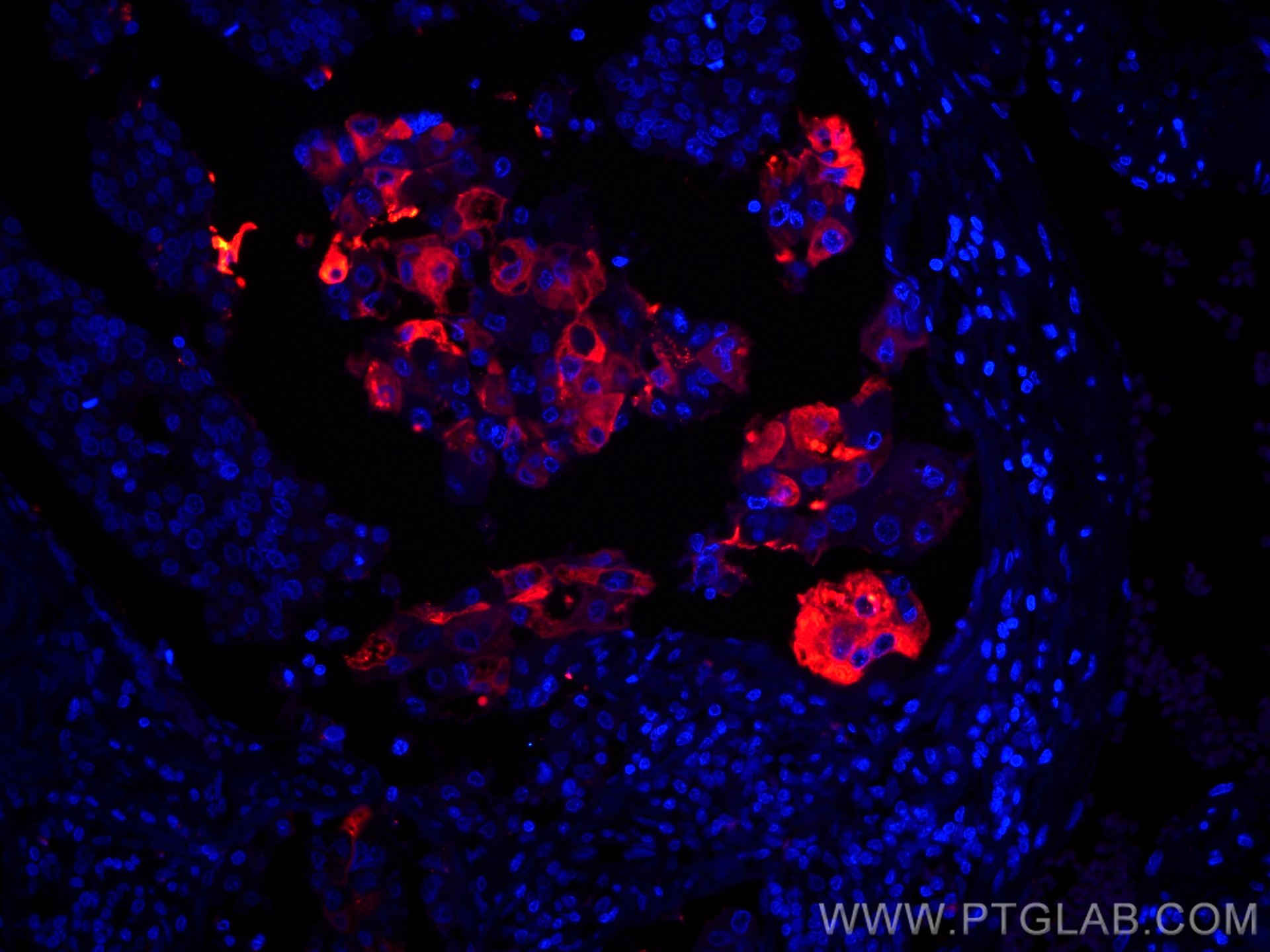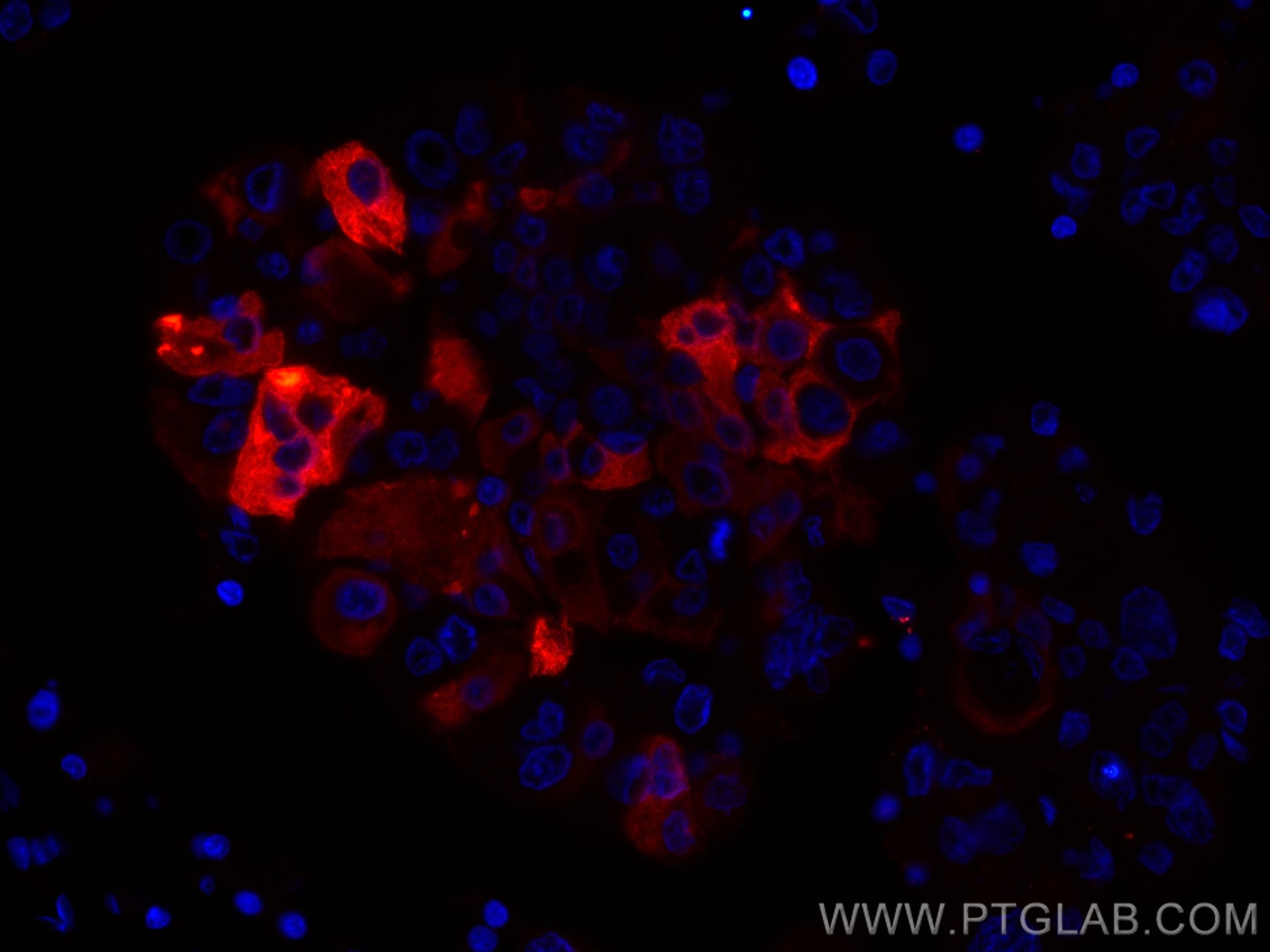验证数据展示
经过测试的应用
| Positive IF-P detected in | human breast cancer tissue |
推荐稀释比
| 应用 | 推荐稀释比 |
|---|---|
| Immunofluorescence (IF)-P | IF-P : 1:50-1:500 |
| It is recommended that this reagent should be titrated in each testing system to obtain optimal results. | |
| Sample-dependent, Check data in validation data gallery. | |
产品信息
CL594-66237 targets Mammaglobin A in IF-P applications and shows reactivity with human samples.
| 经测试应用 | IF-P Application Description |
| 经测试反应性 | human |
| 免疫原 | Mammaglobin A fusion protein Ag22485 种属同源性预测 |
| 宿主/亚型 | Mouse / IgG1 |
| 抗体类别 | Monoclonal |
| 产品类型 | Antibody |
| 全称 | secretoglobin, family 2A, member 2 |
| 别名 | Mammaglobin 1, Mammaglobin A, MGB1, SCGB2A2, UGB2 |
| 计算分子量 | 93 aa, 10 kDa |
| GenBank蛋白编号 | BC128252 |
| 基因名称 | Mammaglobin A |
| Gene ID (NCBI) | 4250 |
| RRID | AB_2919969 |
| 偶联类型 | CoraLite®594 Fluorescent Dye |
| 最大激发/发射波长 | 588 nm / 604 nm |
| 形式 | Liquid |
| 纯化方式 | Protein G purification |
| UNIPROT ID | Q13296 |
| 储存缓冲液 | PBS with 50% glycerol, 0.05% Proclin300, 0.5% BSA , pH 7.3 |
| 储存条件 | Store at -20°C. Avoid exposure to light. Stable for one year after shipment. Aliquoting is unnecessary for -20oC storage. |
背景介绍
Mammaglobin A, also known as SCGB2A2, is a member of the secretoglobin superfamily. Mammaglobin A is a breast cancer-associated antigen almost exclusively over-expressed in primary and metastatic human breast cancers, making it a specific molecular marker and a potential therapeutic target for breast cancer. This monoclonal antibody is raised against full-length of 93-amino acid human mammaglobin A.
实验方案
| Product Specific Protocols | |
|---|---|
| IF protocol for CL594 Mammaglobin A antibody CL594-66237 | Download protocol |
| Standard Protocols | |
|---|---|
| Click here to view our Standard Protocols |

